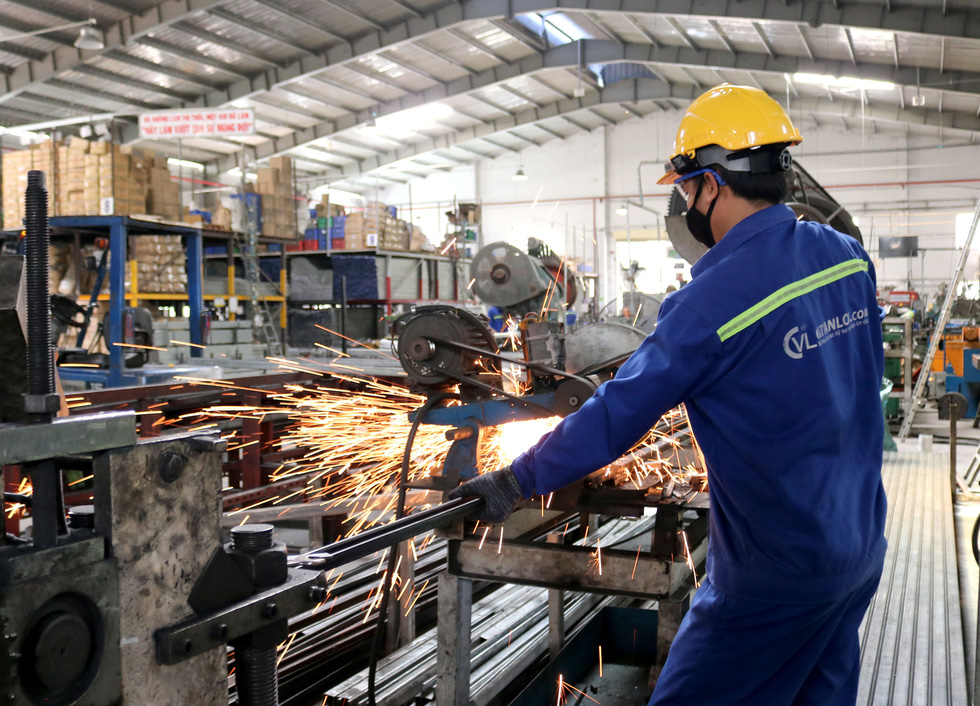Vietnam’s supporting sectors continue pushing forward despite the difficulties and extreme competitive pressure caused by a global pandemic and a variety of other geopolitical issues.
Even during the COVID-19 pandemic, enterprises across Vietnam managed to trudge ahead, securing new orders for export and posting increases in purchase requests.
Mold production for Tesla
At the end of June, Nguyen Van Tri, general director of Lap Phuc Mechanical Company, took reporters to a tour of the company’s 10,000-square-meter factory in District 7, Ho Chi Minh City.
According to Tri, Lap Phuc began investing heavily in machinery and production quality as part of a push to adapt to global supply chain shifts over the past two years.
The company’s goal is to offer a cheaper alternative to Chinese enterprises.
Lap Phuc is currently courting Tesla, General Motors, and GS Battery VietNam Co. Ltd as potential clients and is awaiting quality feedback on samples of manufacturing molds and fuse holders for these companies before moving ahead with filling orders.
This is just a small glimpse of a much larger trend.
Over the past three years, U.S. companies have begun to rapidly shift their manufacturing away from China, and Tri has spent that time investing hundreds of billions of Vietnamese dong into manufacturing machinery in order to meet these demands. (US$1 = VND23,398)
In 2021 alone, the company’s revenue spiked from about $1 million to $4 million.
Tri claims such success is owed to the U.S.-China trade war, Vietnam’s more competitive tax rate of three percent on molds compared to China’s 28-percent tax rate, and the disruption of global supply.
He also was not shy in attributing a portion of his company’s achievements to the efforts of his employees, who have worked overtime and across time zones in order to manage Lap Phuc’s overseas partners.
“I don’t consider this as a success yet because we are still overloaded [by the workload],” Tri said.
Niche market
Cat Van Loi Industrial Electrical Equipment JSC has also managed to turn the threat of complex geopolitical issues into an opportunity.
Using the Japanese 5S workplace organization model at its 15,000-square-meter factor at the Automotive - Mechanical Industrial Park in Cu Chi District, Ho Chi Minh City, Cat Van Loi’s 150 employees have pulled in an impressive table of clients include Toshiba, Jesco Asia JSC, and Comin Asia, as well as about 20 Japanese mechanical and electrical contractors in Vietnam.
Le Mai Huu Lam, general director of Cat Van Loi, said that the company’s 15 year history had been rocky before its recent success, noting that the outputs in his industry often straddle a thin line between being sold as completed products or being sold as scrap, despite the investment of billions of U.S. dollars.
With the determination to make the company a part of the global supply chain, Lam has attended human resources training courses in Japan and spends up to three months each year studying global business trends and attending international supporting industry conventions.
Though his company was not a first mover, and is often caught in pricing competitions with more experienced firms from Thailand and China, Lam’s decision to position his company in the niche market of steel conduits, suspension systems, racks, lightning protection products, and cable trays, seems to be paying off.
Besides export, Cat Van Loi’s products have been used in major domestic projects such as Ho Chi Minh City’s metro line No. 1, the Thai Binh 1 and Van Phong thermal power plants, and the Long Son oil refinery.
While the Vietnamese steel industry still imports a large portion of its raw materials from other countries, mainly China, Lam is determined to manufacture products with stable quality that meets international standards and timely delivery.
“With international certifications and inclusion in the list of reputable suppliers, it is possible [for Cat Van Loi] to participate in the global supply chain,” said Lam.
Lam also emphasized the importance of accelerating the government’s existing support policy in terms of land incentives, lower interest rates, and support for human resources training.
Changing situation
“It is not easy for Vietnam to build a self-reliant supporting industry that deeply participates in global supply chains,” Lam commented, adding that the key to success is to do business methodically and give priority to quality.
Following the same strategy, Lap Phuc Mechanical Company is no longer afraid of competition from Chinese enterprises.
FDI enterprises, including giant firms like Panasonic and domestic companies like Tan A Dai Thanh, also use Lap Phuc’s molds.
 |
Like us on Facebook or follow us on Twitter to get the latest news about Vietnam!




















































